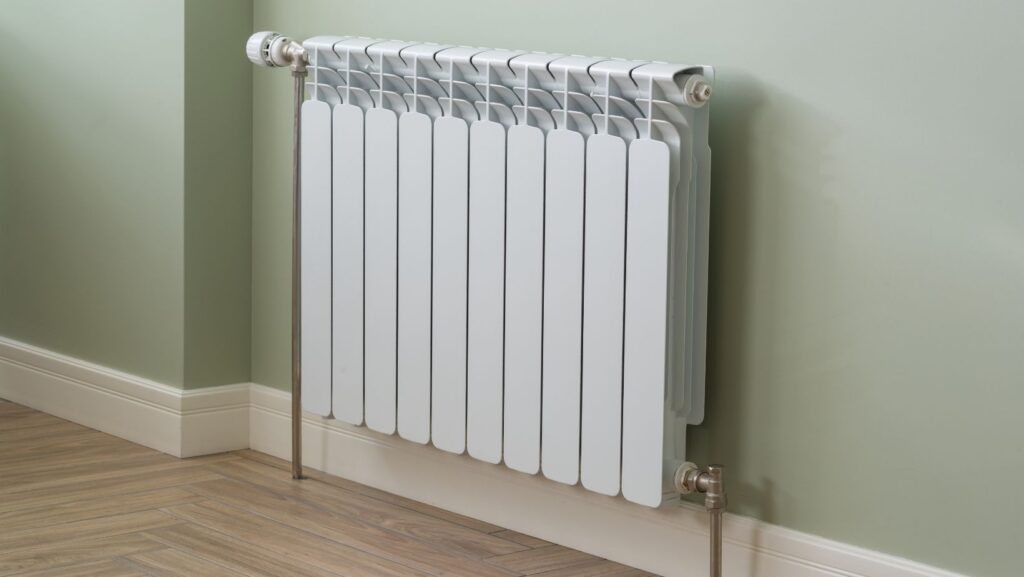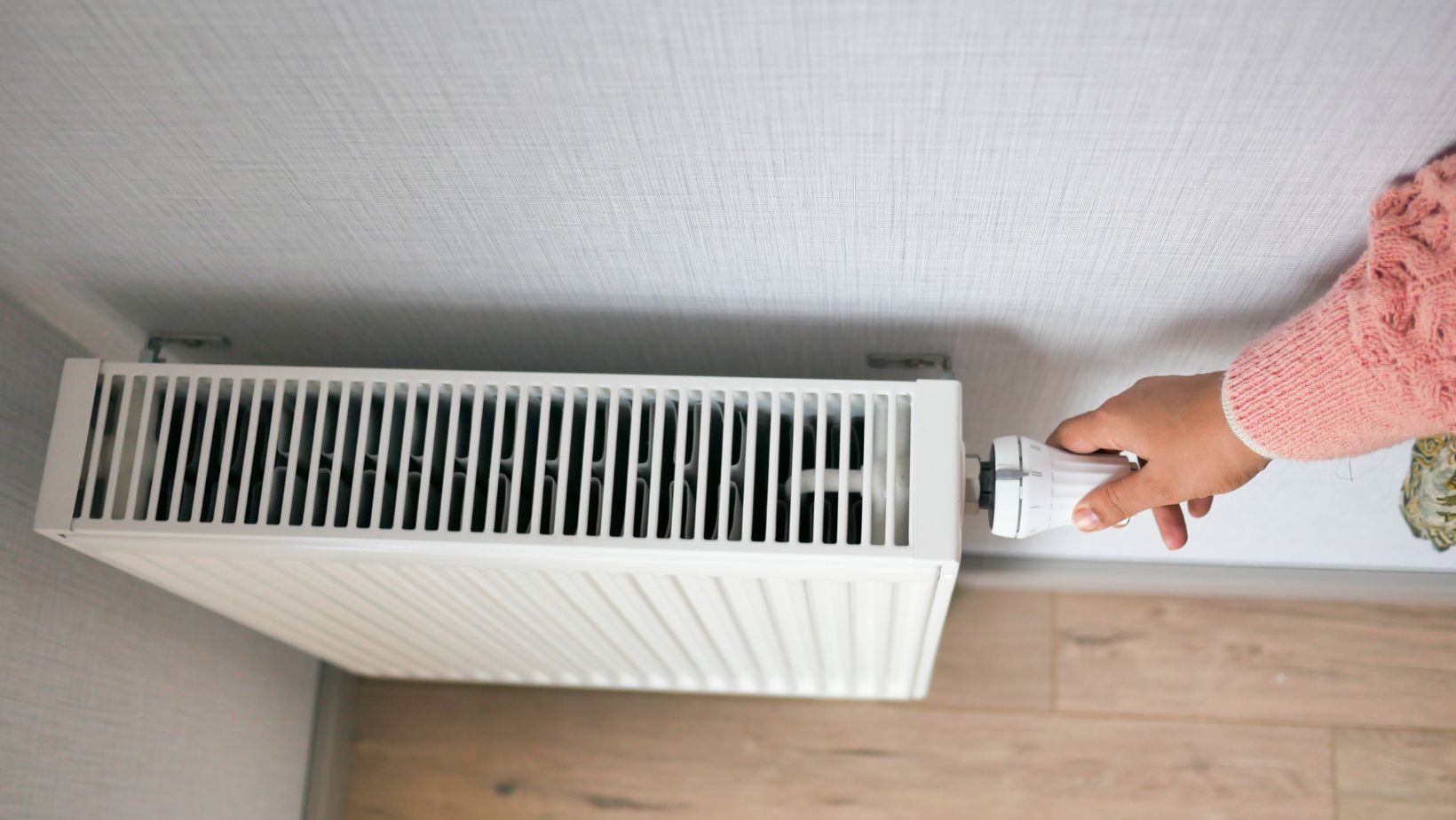
Vertical radiators are becoming increasingly popular and commonplace in modern houses.
They can be very stylish, and take up ‘less’ space (perceived space, not actual space) due to the fact that walls in many a room will be taller than they are wide.
With an increase in popularity comes an increase in production and quality, with some very high output options coming onto the market.
With that in mind, people looking to revamp their home may find themselves asking ‘are vertical radiators better than horizontal’.
The answer – as is often the case with home improvement – is ‘it depends’ – from where you want it to what you are wanting out of it.
But instead of just saying that ‘it depends,’ we have teamed up with the heating experts at Trade Radiators to get a definitive guide that covers everything you need to know about vertical versus horizontal radiators.
“Ultimately, there is no definitive answer; it depends on the size and shape of your home, as well as many other factors,” says heating expert Nic Auckland.
“So while it’s unfair to say that one is ultimately better than the other, we will look at the different situations that both vertical and horizontal radiators are well suited to.”
This guide will look at different situations, and will arm you with the knowledge needed to nudge you to a decision on whether vertical or horizontal radiators are better for your home.
Pros And Cons Of Vertical Radiators
First of all, we’ll look at the pros and cons of vertical radiators, the reason being most people already have horizontal radiators in their home. So, the known benefits and drawbacks of vertical heating are a little less common.
Here’s a quick overview of the pros and cons of vertical radiator units:
Vertical radiator pros:
- They can save a lot of space and allow you to add more furniture to a home.
- They look very stylish and are still uncommon enough that they’ll stand out.
- They have heat outputs that can be tailored to even larger open-space rooms.
Vertical radiator cons
- They are heavy, so they are only really suitable for brick walls.
- It can be harder to get good heat distribution (we’ll go into this in detail later).
- They cannot be replaced as easily as a designer horizontal radiator.
Now that you have an idea of what you’re getting out of one of these radiators let’s measure it up against horizontal radiators:
Are Vertical Radiators More Efficient?
No, vertical radiators are not more efficient than their horizontal counterparts. That’s not to say that they are meaningfully less efficient, however.

You could argue that since heat rises, you’ll get more coverage out of a horizontal radiator – but there aren’t any concrete studies that have looked into this.
And even if it were found out to be the case, if you have a good output, and a properly insulated room it doesn’t make a huge amount of difference.
In terms of energy efficiency, like other options a radiator will be efficient so long as its output is properly suited to the room that it’s in.
If you find out the output is too high (the room is always too hot or doesn’t get used much), you can control hot water usage with a thermostatic valve. If it’s too low, move furniture closer to the radiator and improve insulation with more soft furnishings.
BTU Ratings Across Vertical And Horizontal Radiators
Heat output is best measured in BTU or British Thermal Units.
This output takes into account more than just the raw wattage, and there are a lot of calculators that will factor in every inch of your room to calculate the ideal BTU.
As we’d mentioned previously, there could be an argument that due to its width and the fact that heat rises up an argument could be made that horizontal radiators have more coverage.
But as far as BTU outputs go, it’s very much up to the rating on the individual radiator. You’ll get vertical units that are significantly more powerful than horizontal ones.
The expert says: “Every radiator has a set output, so it doesn’t matter what way it’s orientated – be sure to check the output and make sure it’s right for your room.
Pro tip 1: Do NOT trust retailers that have a ‘Delta 60 (Δ60)’ or ‘Delta 70 (Δ70)’ marking. Make sure the radiator you’re buying comes from a store that explicitly uses Delta 50 (Δ50) to measure heat output.
Due to them being much more common, there are a lot more horizontal high output radiators with BTU – the highest output radiators also tend to be freestanding. These radiators, the Trade heating expert says, are for large open spaces like hallways.
So in short, whether going vertical or horizontal you should be able to find a product that has the right output for most rooms in your home.
I’m On A Budget; Should I Go Vertical Or Horizontal?
You can get both vertical and horizontal radiators on a budget, with most radiator retailers having greatly reduced clearance sections.
Horizontal models are still more common, so the chances are you’ll find a better deal in the horizontal range.
With that being said, make sure to check the vertical range as you may just come across a brilliant offer.
Pro tip 2: When shopping for a new radiator, look for the following quality markers: BS EN 442, CE Marking, UKCA Marking
If you are on a budget, we’d also recommend considering the cost of installation, as vertical radiators need to be wall-mounted and may require a little more skilled labor.
Perfect Radiator For Limited Wall Space & Tight Nooks
Tight spaces are where vertical radiators thrive, as they can squeeze into corners that horizontal options simply cannot.
Auckland comments: “When there is limited space, vertical radiators are probably a better option, as your roof will always be a decent height, whereas wall width can be quite constraining.”
As they are also typically a part of ‘designer’ ranges, they also come in a great range of colours, meaning that they can fit into a tight space while complementing the wall or accent colour – they don’t need to stick out!

Pro tip 3: Your heat output won’t matter if your radiator is hidden away behind a piece of furniture. Give it at least 10cm to properly distribute heat. This goes for both vertical and horizontal radiators.
Remember that context is important here, if the limited space is because of a window, then that may be an instance in which horizontal is a better option.
Wall-Mounted Radiators – What’s The Better Option
If you’re going wall mounted, you might find that a vertical radiator is a better option, as it takes up a lot less space across the walls – allowing you to, for example, have a chair on each side of it which is something that you might not be able to do with a horizontal radiator.
If you have plasterboard walls, horizontal radiators would be the better option for you as their weight plus the vertical design could make it hard to safely mount a unit.
Easy-To-Install Radiators – How Do I Do This As A Diy Job
The easiest way to replace a radiator is to get one with the same measurements as your current unit, be that vertical or horizontal.
“If you’re replacing a radiator, you need to think about the current measurements,” Auckland points out.
He adds: “If you’re thinking of swapping from horizontal to vertical, it may be a bit more than a quick DIY job.”
This is because you will need new fixings and in some cases pipe work, which can require a professional’s help.
What Radiators Are More Maintenance-Friendly?
Once again, it can really depend from model to model. However, the Trade Radiators expert points out one of the benefits of vertical radiators over horizontal models.
Nic Auckland says: “Generally we don’t recommend hanging wet clothes over radiators, it causes them to need more regular bleeding – so actually in making it more tricky to do that with vertical radiators we find that the upkeep tends to be easier.”
While that is a handy tidbit, ultimately it is a case of maintenance on your end – so long as you bleed the radiator when needed, and make sure it’s running consistently either model is as maintenance friendly as the other.
Know what you want, understand what you need, and make the right call
While there is no definitive correct answer, hopefully this will help you consider what you are looking for out of a radiator and help inform a good decision in buying your next unit.
For more decoration guidance related to heating, read our blogs on The Importance of an Efficient Floor Plan and How Smart Technology is Changing Home Comfort.












